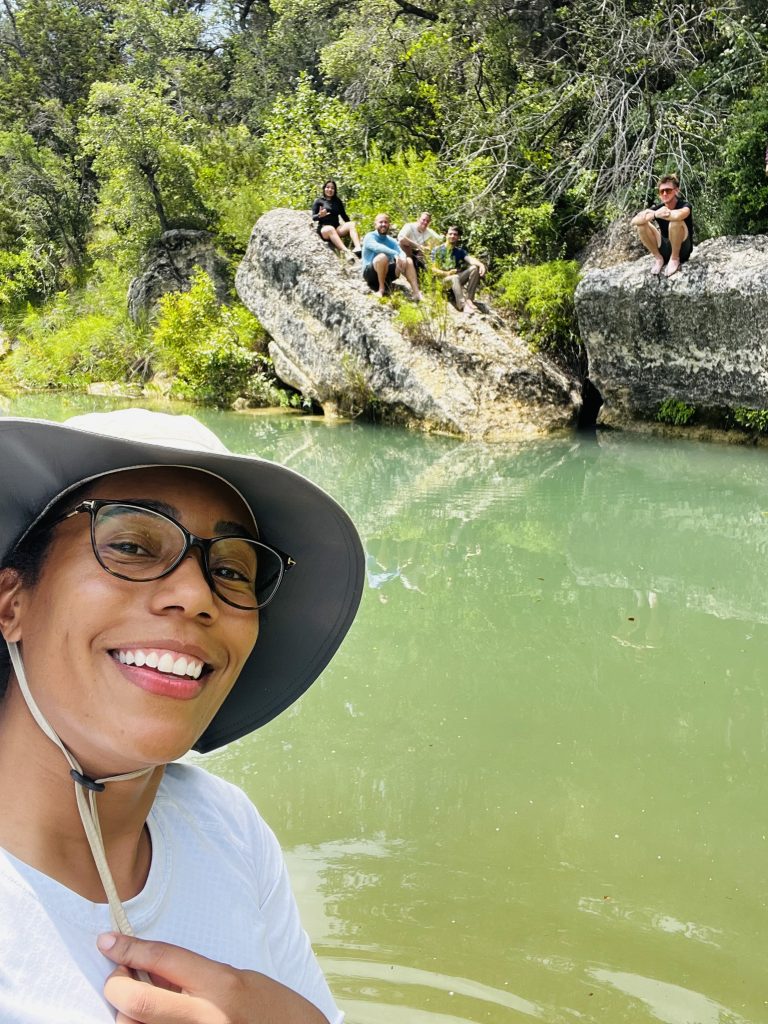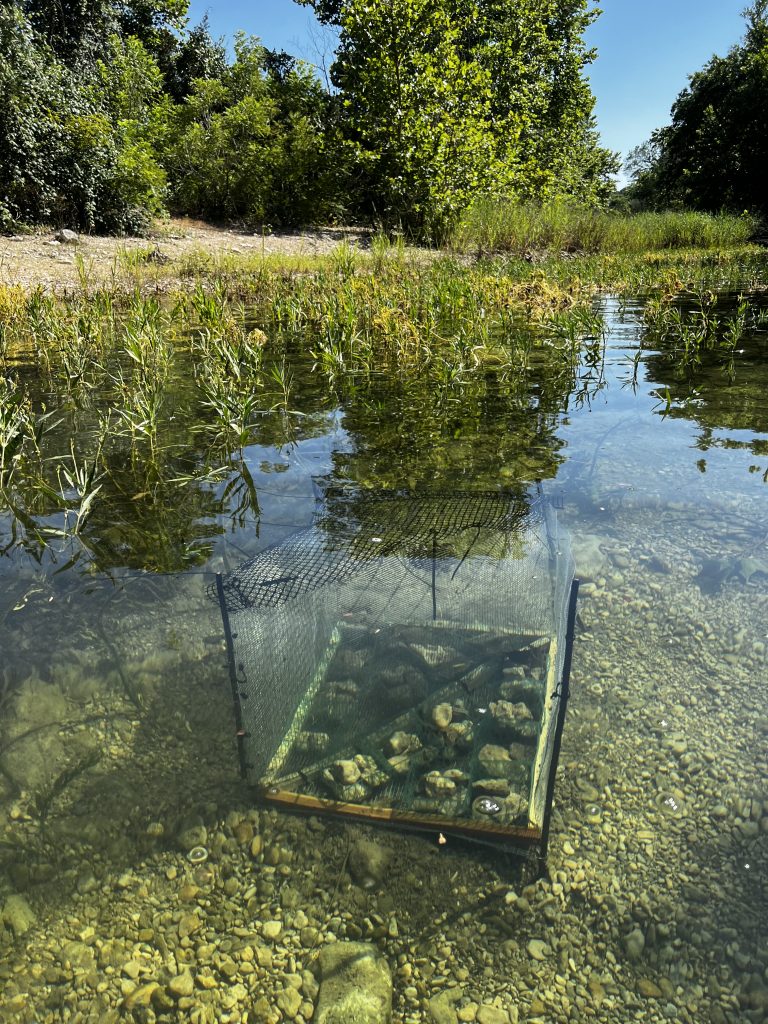
Andreia Teixeira Alves, a doctoral candidate majoring in aquatic resources and integrative biology at Texas State University, is studying how droughts affect aquatic life. She and her team conduct fieldwork at Shield Ranch Barton Creek.
Can you tell us about your research?
When streams dry up, what happens to the life left behind? My research explores how droughts shape aquatic life in small stream pools that remain when other parts of the river dry out. I am examining the impact of drying on biodiversity and ecosystem health.
Can you explain what remnant pools and the hyporheic zone are — and why they’re important for aquatic life in streams like Barton Creek?
Remnant pools are small, isolated areas of water that persist in a stream when it dries up. They are considered safe havens for fish, aquatic insects, and other aquatic life, giving them a chance to survive until the stream flows again. The hyporheic zone is the permeable sediment beneath the streambed that can provide shelter for small organisms, improves water quality by filtering pollutants and sediments, and serves as a thermal buffer, stabilizing the temperature.
What are you hoping to learn by studying these refuges during dry periods at Shield Ranch?
By studying these refuges, I hope to deepen our understanding of how aquatic communities survive and adapt when streams dry up. I’m looking at how interactions among fish, insects, and algae change under extreme conditions and what factors help certain pools support more life than others. This will help reveal the key features that make these habitats resilient and essential for sustaining biodiversity during drought.
How could your findings help guide conservation efforts in Texas and other regions facing more frequent or severe droughts?
My research findings help reveal how stream species respond to drying by examining how fish, insects, and algae interact and recycle nutrients as water disappears. This understanding allows us to better predict ecosystem responses and guide water management and habitat conservation strategies in Texas and other drought-prone regions.
What has surprised or inspired you most during your time conducting fieldwork on Shield Ranch Barton Creek?
What inspired me most during my fieldwork at Shield Ranch was seeing the incredible preservation and stewardship efforts in action. It’s amazing to work in a place that is not only beautiful but also so well managed and dedicated to protecting natural ecosystems. I’m also continually amazed by how resilient these ecosystems are, how they bounce back and flourish after each drying event.



